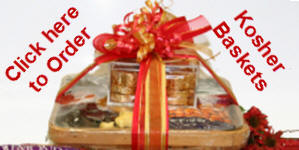|
|||||||||||||||||||||||
|
By: Daniel Feldman, Contributor Click Here for More Holiday Articles
This year, I noticed that the word shofar is similar to kippur except for one letter, and that difference occurs in the first letter of each word. Shofar has a shin as its first letter, while kippur has a kaph as its first letter. I don’t believe this is coincidental. There must be a message for us in two important words that become so essential to our High Holiday spirit and philosophy. Shin, the letter that starts the word shofar means “tooth”. Kaf, the letter that begins the word kippur, means “palm” (as in the palm of the hand.) Teeth are essential for grinding food into small pieces. Without them, we would probably choke easily as we would be unable to swallow such large pieces of food. In a sense, the teeth are a precursor to the digestive process, where the stomach breaks down the food further. Metaphorically, perhaps, the teeth represent “breakage” of large pieces into smaller ones. Perhaps, then, it is no coincidence that an essential commandment that we recite twice daily is v'shinantam levanecha – you shall teach your children. The word v'shinantam contains the word shen. This implies that we should not just relate Torah concepts and rules to our children, but make sure that when we teach our children, we break down the complex Torah ideas into smaller pieces that our children can easily digest. The shofar is a piece broken off from the top of the ram’s head. Normally, the ram would use these horns to fight and butt into another animal. When we have the shofar, in a sense, we have broken that animal’s ability to fight, and instead, we blow into this horn as a wakeup call to repair our own broken hearts and spirits toward teshuva – repentance. So, in summary, the shin of shofar is symbolic of the “breakage” that the teeth represent. The kaph of kippur, represents the palm, which is that part of the hand that “gathers” the broken pieces that may be scattered, and makes them into a single form. The palm of the hand also represents the part of the body that acts to give and help others. The connection between shofar and kippur lies in the connection between understanding the teeth and the palm. If the teeth are responsible for “breakage”, perhaps, then, the period between Rosh Hashanah and Yom Kippur is a time for us to break down our own complexities in life and analyze our actions and deeds. It is also a time for us to break down all barriers that prevent us from approaching God. Yom Kippur, with its kaph, palm is a time for us to gather the best parts of our actions, gathering the simplified “pieces” and unifying our thoughts into an action plan that can be easily distributed to the rest of the world. Our palms should have unified “large” pieces already available to help others. The High Holiday season begins with the sound of the
shofar
on Rosh Hashanah (or the beginning of Elul, technically,)
and ends with the sound of the shofar on Yom Kippur. The
ending of Yom Kippur with the sound of the shofar is a
reminder that, even if during Yom Kippur, we may have
thought that the kaph has gathered every broken piece, in
fact, Yom Kippur is merely the beginning of that gathering
process. Throughout the year, there will still be many
broken pieces that must be reshaped and reformed in the palm
of our hands.
Mazor Guide for Yom Kippur brings you much more about the holiday, its meaning and its traditions... See the links below. Articles
|
|
|||||||||||||||||||||
|
Mazor Guides: Wealth of Information and Resources Copyright 1998-2024 MazorNet, Inc. | http://www.MazorGuide.com | http://www.MazorBooks.com | http://www.Kosher-Directory.com | http://www.JewishCelebrations.com |
|||||||||||||||||||||||











